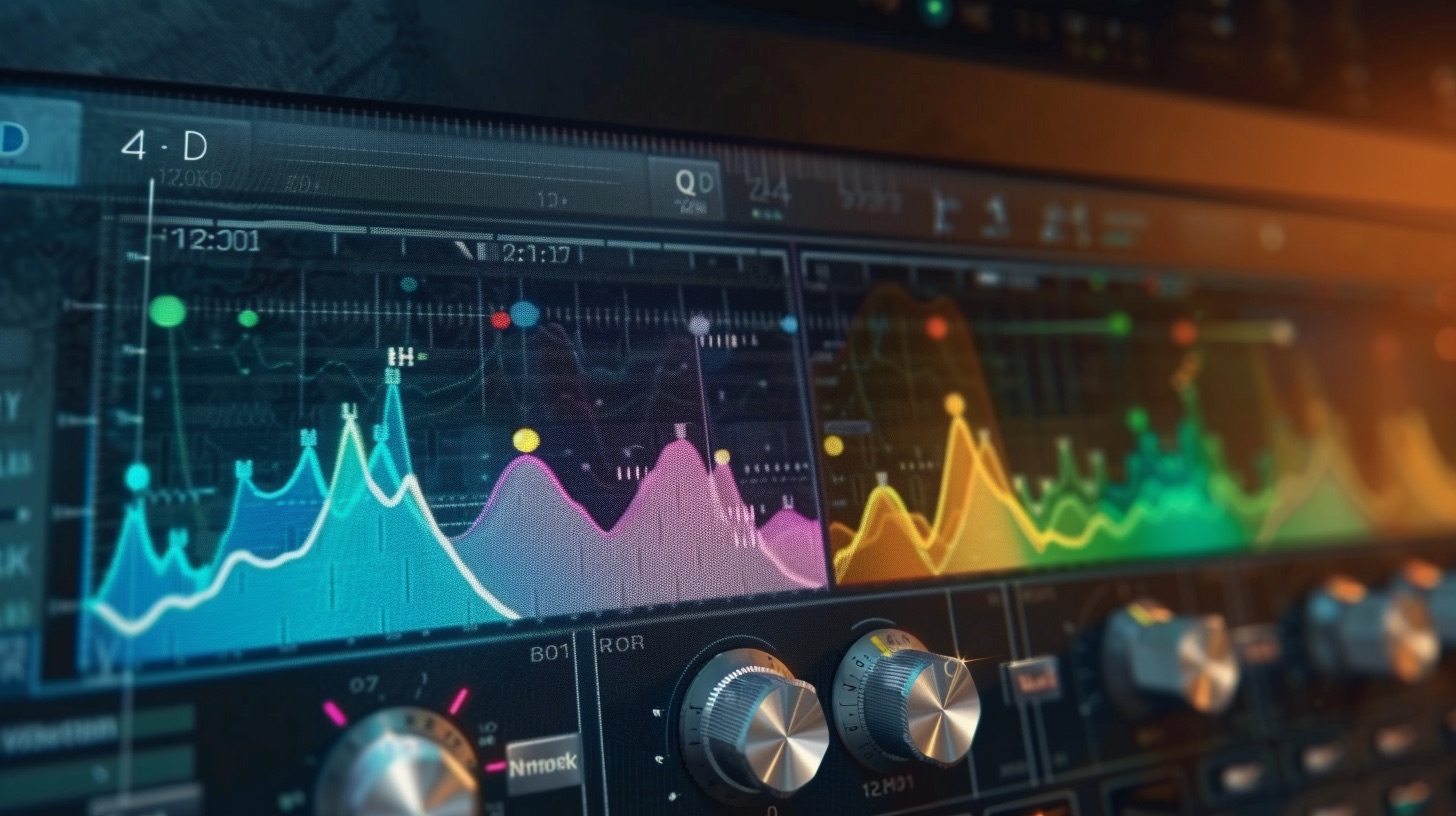
Cubase Tutorials: A Metal Producer’s Guide to This DAW
Nail The Mix Staff
The Great DAW Debate: A Quick & Dirty Breakdown
Before we get into Cubase, let’s quickly survey the field. If you’re new to this, don’t just use what your buddy uses. Try a few demos and see what clicks.The “Industry Standard”: Pro Tools
Pro Tools is the OG. Walk into almost any major studio in the US, and you’ll see it running. Its biggest strength is its rock-solid audio editing. It was designed to mimic an analog console workflow, and for tracking and editing a full band, it’s a powerhouse. The catch? It’s notoriously clumsy with MIDI and loop-based writing. Its sequencing features are way behind other DAWs, and things like time-stretching are less intuitive. If you’re just recording and editing audio, it’s great. If you do any writing with virtual instruments, you might find it frustrating.The Mac-Only Powerhouse: Logic Pro
Logic is a fantastic all-rounder for Mac users. It handles audio and MIDI with ease and comes packed with a ton of great-sounding stock plugins and virtual instruments. The catch? Besides being Mac-only (a dealbreaker for many), its audio editing workflow isn’t a favorite among metal producers. Can you edit drums in Logic? Yes. But the fine-toothed, sample-accurate drum editing required for modern metal is often clunky compared to Pro Tools’ Beat Detective or the workflows in Cubase and Reaper.The Underdog Champion: Reaper
Reaper has a massive following in the rock and metal world for good reason. It’s affordable, ridiculously customizable, and has incredibly robust audio and MIDI capabilities. Its free trial is famously generous, which has won it a lot of converts who end up sticking around for good. The catch? It’s not a “studio standard,” so collaboration can be a pain. You’ll likely be the only one in your circle using it, which means bouncing stems is your only option for sharing projects.The Others: Ableton Live, FL Studio, Studio One
- Ableton Live & FL Studio: Kings of electronic music and hip-hop. They are geniuses at MIDI, sampling, and loop-based creation. You can record audio in them, but the workflow isn’t optimized for tracking and editing a 16-channel drum kit and quad-tracked guitars. We’ve only had one producer on Nail The Mix use Ableton for a full mix.
- Studio One & Bitwig: These are the modern contenders. They’re slick, well-designed, and have learned from the mistakes of the older DAWs. They are perfectly capable, but suffer from the same issue as Reaper: a smaller user base, which can make collaboration and finding support a little harder.
So, Why Cubase for Metal? A Deep Dive
This brings us to Cubase. It’s huge in Europe and has been steadily gaining ground in the US. Cubase is one of the oldest DAWs on the block, originally launching on the Atari ST way back in the day. That longevity is a testament to its power. Its developer, Steinberg, even invented the VST plugin format—the standard that most of us rely on every single day. The main reason metal producers flock to Cubase is simple: it’s elite at everything. It has the powerful, precise audio editing capabilities you’d expect from a pro-level DAW like Pro Tools, but it also has deep, intuitive MIDI and virtual instrument features that rival Logic or Ableton. It’s the best-of-both-worlds approach that makes it a perfect fit for the modern metal producer who needs to track a live band one day and program realistic drums with Superior Drummer 3 the next.Killer Cubase Features & Tutorials for Metal Producers
Talk is cheap. Let’s look at some specific tools inside Cubase that you can use to make your mixes heavier, tighter, and more professional.VariAudio 3: Pitch & Timing Correction on Steroids
Forget buying Melodyne. Cubase has VariAudio built right in, and it’s a secret weapon for clean, powerful metal vocals. You know how screaming vocals can sometimes have weird harmonic overtones or pitch issues that clash with the guitars? VariAudio lets you get surgical. How to use it:- Double-click a vocal audio clip to open the editor.
- In the inspector on the left, click “VariAudio.”
- Cubase will analyze the audio and display it as pitch blobs, just like Melodyne.
- You can now grab individual notes to correct pitch, or use the “Quantize Pitch” and “Straighten Pitch” tools to subtly (or aggressively) tune the performance.
The Sample Track: Your Secret Weapon for Drum Replacement
Want to blend a beefy snare sample under your live snare? In most DAWs, you’d need a third-party plugin like Slate Trigger 2. And while the process can be complex, Cubase simplifies setting up drum tracks for sample replacement with its native Sample Track. Here’s a quick tutorial:- Find the snare sample you want to use (for example, a sample from the NTM-exclusive Joey Sturgis Tones drum libraries, which you can also use to create a massive snare bomb effect).
- Drag the WAV file into an empty area of your project. Cubase will ask if you want to create an audio track or a Sample Track. Choose Sample Track.
- Now, select your original live snare track. Go to the “Hitpoints” tab in the editor and adjust the threshold until it detects all your snare hits.
- Click “Create MIDI Notes” from the hitpoints.
- Drag that newly created MIDI clip onto your Sample Track.
Audio Alignment: Tightening Guitars in Seconds
Getting quad-tracked rhythm guitars perfectly in sync is essential for that modern “wall of sound” tone. While manually editing guitars gives you ultimate control, doing it by hand can be a nightmare. Cubase’s Audio Alignment tool automates the process. How it works:- Open the Audio Alignment panel.
- Select your best-played guitar take and set it as the “Reference.”
- Select the other guitar takes you want to tighten up and add them as “Targets.”
- Hit “Align Audio.” Cubase will analyze the timing of all clips and apply micro time-stretching to lock the targets to the reference.
Control Room: Pro-Level Monitoring Control
This is a feature many intermediate users overlook, but it’s pure gold. The Control Room is a separate monitoring environment that lets you manage complex routing without messing with your main mix bus. You can set up separate headphone mixes for each band member, configure a talkback mic, and switch between different sets of studio monitors (e.g., your mains and your Avantone MixCubes) with a single click. This is pro-studio functionality that normally requires an expensive monitor controller, but it’s built right into Cubase Pro.Don’t Argue, Just Mix
At the end of the day, any of the top-tier DAWs will get the job done. Pro Tools, Cubase, Logic, and Reaper are all incredible tools, and you can find countless examples of world-class producers making hit records on all of them. Don’t get bogged down in forum arguments. Pick one that feels good, learn it inside and out, and focus on what really matters: your ears and your decisions. The tool is just a tool. Learning the techniques behind a powerful mix—how to use EQ, compression, saturation, and automation to make your tracks hit hard—is what separates the pros from the amateurs. Watching guys like Will Putney, Jens Bogren, and Andrew Wade build a mix from scratch is a masterclass in technique, not software. If you’re ready to stop worrying about the gear and start mastering the craft, Nail The Mix gives you the multitracks from real metal records and shows you exactly how the pros mixed them, step-by-step, in their DAW of choice.
100+ Insanely Detailed Mixing Tutorials
We leave absolutely nothing out, showing you every single step
More info on DAWs for metal
DAW deep dives Cubase vs other DAWs for metal- Cubase vs Pro Tools
- Cubase vs Logic Pro
- Cubase vs Reaper
- Cubase vs Ableton
- Cubase vs Bitwig
- Cubase vs Presonus Studio One
- Cubase vs FL Studio
Get a new set of multi-tracks every month from a world-class artist, a livestream with the producer who mixed it, 100+ tutorials, our exclusive plugins and more
Get Started for $1




